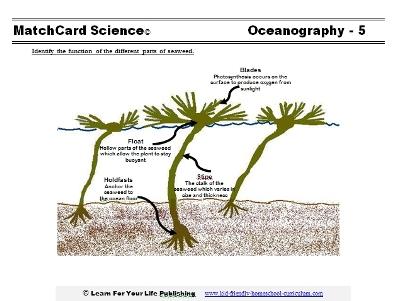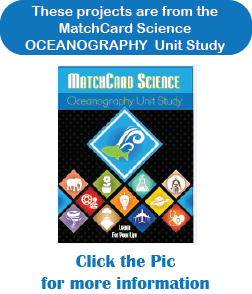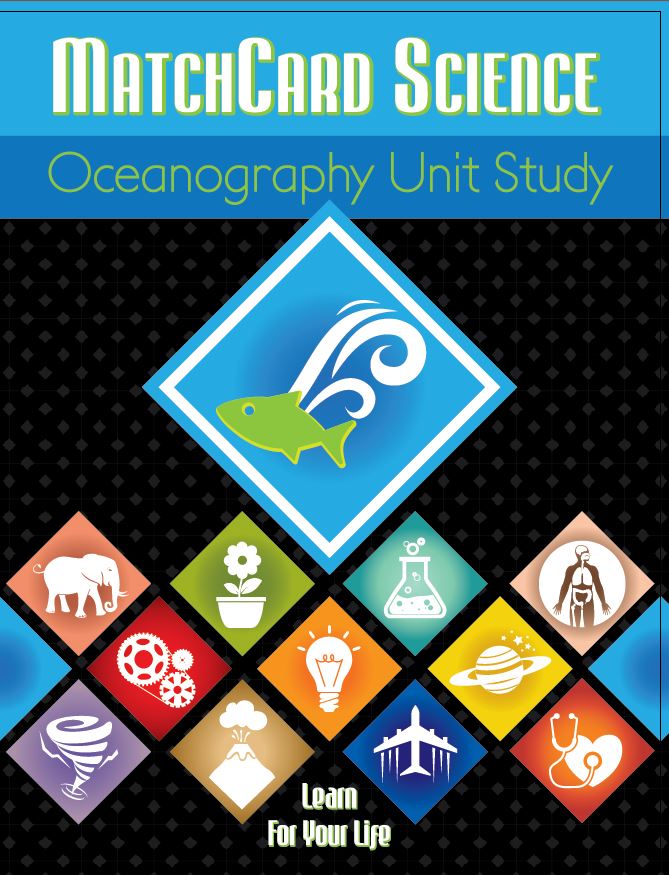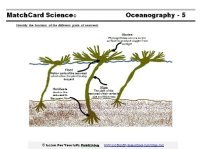Seaweed Worksheets
Identify the parts and function of seaweed
These seaweed worksheets are from the MatchCard Science Oceanography Unit Study.
Free Download Below


Seaweed MatchCards
Educational Objective: Identify the function of the different parts of seaweed..MatchCard Information Pieces provide the names and descriptions of seaweed parts. Ideas for projects to correspond to the seaweed worksheets are listed on the instructor's page and below.
Projects include: 1) Seaweed collage, 2) Sushi, 3) Our seaweed tongue twister, 4) A seaweed field trip, and 5) Seaweed Appreciation bumper stickers.
A science fair project with algae is described.
Download and Use the Seaweed Worksheets MatchCard
This is MatchCard #5 of the Oceanography Unit Study. More information on the MatchCard Science curriculum is at the bottom of this page.Getting Ready
Before introducing the seaweed worksheets, you might want to acquire different species of seaweed. A variety of smaller pieces can be obtained relatively inexpensively at a local pet store that sells fish and acquarium supplies.Have a variety of species on hand that they can touch and compare. Ask how they are similar and how they are different.
Alternative: Ask your student to do an on-line search for pictures of seaweed. Ask them to find pictures of five different types of seaweed and five different facts about seaweed.
The Seaweed Primer
What is seaweed?
Seaweed is a form of algae that has roots reaching into the ground and also has an upper end that protrudes to the surface of water.Seaweed is benthos, a form of ocean life that is rooted to the ocean floor.
Let the students look at the picture on the seaweed worksheets and compare the specimens in front of them as they learn about the main parts.
Seaweed is NOT a plant. Here's how to tell the difference between algae and plants.
Blades
The blades of the seaweed come to the surface of the water.Photosynthesis occurs on the blades. Photosynthesis is the process where plants convert sunlight to oxygen.
Consider this: What would happen if the blade was not on the surface?
Think of the names: "seaweed" and "blades." Does it remind you or your lawn? Consider similarities and differences.
Floats
The hollow part of the seaweed that causes it to come to the surface of the water is called a float.Hmmm, I'm guessing all kids could tell why it is called a float.
Do you think it would be possible to make a flotation device made out of seaweed?
Stipe
The stipe is the stalk of the seaweed. It will vary in size and thickness depending on the species and the location where it lives.You can compare the stipe of seaweed to the stem of a flower. Other plants also have stipes: mushrooms and ferns are well known plants with stipes.
Holdfasts
The holdfasts anchor the seaweed to the ocean floor.What would happen if the holdfasts were not present?
Activities with Seaweed
Seaweed Science Fair Project: Fresh or Salt Water
Obtain several specimens of algae from a science supplier.Design an experiment to tell if seaweed prefers fresh or salt water.
You can make your experiment more complex by changing one of several other variables in addition to the type of water:
- Types of seaweed
- Amount of sunlight
- Presence of absence of fertilizer in the water
Seaweed Collage Craft
You will need:
- A variety of seaweed
- Blue posterboard (or white posterboard painted or colored blue
- picture of colorful fish
- brown construction paper or brown paint
- small seashells
- glue
Before cutting the posterboard, practice laying out the pieces of the collage to see the best size.
Use the paint or construction paper to make the floor of the ocean. Cut out the pictures of fish and glue them on the posterboard.
Then wet the seaweed so it is damp. Press it onto the posterboard. As it dries, it should stick to the picture. Dry seaweed can also be attached with glue or a glue gun.
Finally, put small seashells on the bottom.
After putting together the collage, have the students point out the four parts described on the seaweed worksheets.
Sushi, Please
You can have your seaweed and eat it too.
At your local grocery store, get the following supplies:
- nori seaweed sheets
- sushi rice
- sushi mats
- 8 oz of cream cheese
- optional: cut up vegetables, shrimp, crab meat, or salmon for the middle
Spread out the seaweed, press the cooked rice onto the sheets.
Slice the cream cheese in thin slices, and lay on top of the rice. If desired, add other ingredients on top.
Roll on the mats, then slice with a sharp serated knife.
I think your kids will agree it is more fun to make then it is to look at. Even if they would never eat sushi before, they may feel more comfortable trying it with familiar ingredients they made themselves.
A Little Seaweed Tongue Twister
Try saying this three times quickly:
She sees seaweed simmering in the sushi.
A seaweed field trip
If you live near an ocean, lake or large pond, you might want to schedule a field trip (or perhaps we should say water trip) to look for seaweed.The students should gather different species, compare and contrast the different specimens, and identify the parts on the Seaweed MatchCard.
Nature Notebook
Draw specimens of seaweed in a nature notebook. Label the different parts. Try to try them to size compared to one another.Seaweed Appreciation Day
So what's the big deal about seaweed, anyway?Seaweed is a major source of oxygen in our atmosphere. It is also a significant source of food for fish that affects the rest of the food chain.
So how about a Seaweed Appreciation Day?
Or perhaps you can modify some figures of speech to show your appreciation for this under-valued plant. Maybe you could even make a sign or bumper sticker.
How about:
- Have you hugged your seaweed today?
- Stop and smell the seaweed.
- This car stops for seaweed.
- You think of some.....
MatchCard Science
How To Use MatchCards

Download the FREE MatchCard Science Instructor's Guide and see how MatchCards can make building their science knowledge base fun.
Ocean Unit Study

12 Science Unit Studies

Chemistry is only one of twelve complete unit studies for kids in 3rd to 8th grade.
Comprehensive objectives, hands-on projects, suggested science fair experiments, and the fun game-like MatchCards keep them interested in learning science. See all twelve MatchCard Science Unit Studies.
About Our Site
Hands-On Learning















